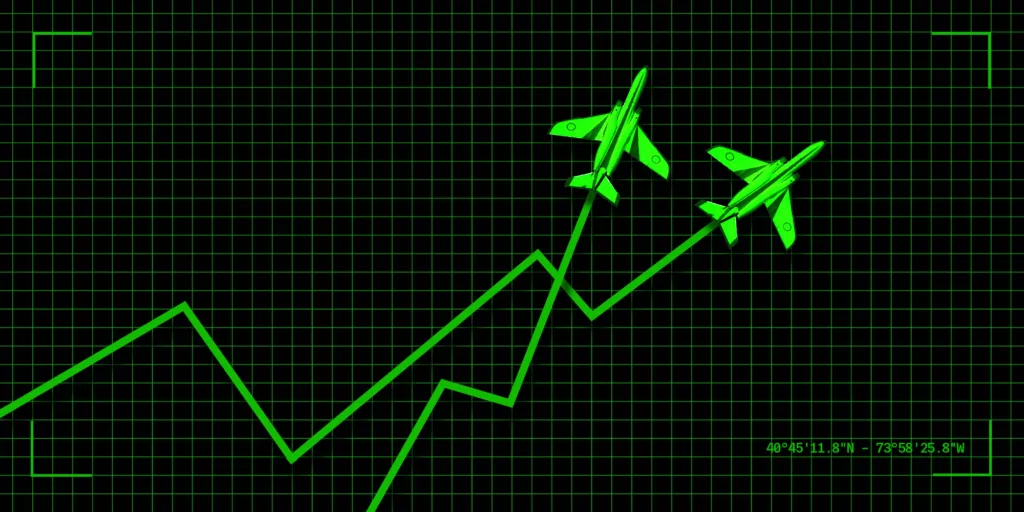$10,000 Invested in Defense Stocks When Afghanistan War Began Now Worth almost $100,000
ECONOMICS, 23 Aug 2021
Jon Schwarz | The Intercept - TRANSCEND Media Service
Was the Afghanistan War a failure? Not for the top five defense contractors and their shareholders.
16 Aug 2021 – If you purchased $10,000 of stock evenly divided among America’s top five defense contractors on September 18, 2001 — the day President George W. Bush signed the Authorization for Use of Military Force in response to the 9/11 terrorist attacks — and faithfully reinvested all dividends, it would now be worth $97,295.
This is a far greater return than was available in the overall stock market over the same period. $10,000 invested in an S&P 500 index fund on September 18, 2001, would now be worth $61,613.
That is, defense stocks outperformed the stock market overall by 58 percent during the Afghanistan War.
Moreover, given that the top five biggest defense contractors — Boeing, Raytheon, Lockheed Martin, Northrop Grumman, and General Dynamics — are of course part of the S&P 500, the remaining firms had lower returns than the overall S&P returns.
These numbers suggest that it is incorrect to conclude that the Taliban’s immediate takeover of Afghanistan upon the U.S.’s departure means that the Afghanistan War was a failure. On the contrary, from the perspective of some of the most powerful people in the U.S., it may have been an extraordinary success. Notably, the boards of directors of all five defense contractors include retired top-level military officers.
Several commentators address this dynamic in the 2005 documentary “Why We Fight,” about a warning that President Dwight Eisenhower issued about the military-industrial complex. Former CIA contractor and academic Chalmers Johnson states, “I guarantee you, when war becomes that profitable, you’re going to see more of it.” A retired Air Force lieutenant colonel says, “American people who have a son or a daughter that’s going to be deployed … they look at the cost-benefit, and they go, ‘I don’t think that’s good.’ But when politicians who understand contracts, future contracts, when they look at war, they have a different cost-benefit analysis.”
These are the specific results for the relevant contractors since September 2001. All except Boeing receive the vast majority of their revenue from the U.S. government.
S&P 500
- Total return: 516.67 percent
- Annualized return: 9.56 percent
- $10,000 2001 stock purchase today: $61,613.06
Basket of Top Five Contractor Stocks
- Total return: 872.94 percent
- $10,000 2001 stock purchase ($2,000 of each stock) today: $97,294.80
Boeing
- Total return: 974.97 percent
- Annualized return: 12.67 percent
- $10,000 2001 stock purchase today: $107,588.47
- Board includes: Edmund P. Giambastiani Jr. (former vice chair, Joint Chiefs of Staff), Stayce D. Harris (former inspector general, Air Force), John M. Richardson (former navy chief of Naval Operations)
Raytheon
- Total return: 331.49 percent
- Annualized return: 7.62 percent
- $10,000 2001 stock purchase today: $43,166.92
- Board includes: Ellen Pawlikowski (retired Air Force general), James Winnefeld Jr. (retired Navy admiral), Robert Work (former deputy secretary of defense)
Lockheed Martin
- Total return: 1,235.60 percent
- Annualized return: 13.90 percent
- $10,000 2001 stock purchase today: $133,559.21
- Board includes: Bruce Carlson (retired Air Force general), Joseph Dunford Jr. (retired Marine Corps general)
General Dynamics
- Total return: 625.37 percent
- Annualized return: 10.46 percent
- $10,000 2001 stock purchase today: $72,515.58
- Board includes: Rudy deLeon (former deputy secretary of defense), Cecil Haney (retired Navy admiral), James Mattis (former secretary of defense and former Marine Corps general), Peter Wall (retired British general)
Northrop Grumman
- Total return: 1,196.14 percent
- Annualized return: 13.73 percent
- $10,000 2001 stock purchase today: $129,644.84
- Board includes: Gary Roughead (retired Navy admiral), Mark Welsh III (retired Air Force general)
All stock return calculations were made with the Dividend Channel’s DRIP calculator for the period from September 18, 2001 to August 15, 2021. They reflect returns gross of any taxes and fees and are not adjusted for inflation.
______________________________________________
Jon Schwarz – jon.schwarz@theintercept.com
Tags: 9/11, Afghanistan, Anglo America, Banksters, Capitalism, Corruption, Elites, Finance, Greed, Mafia, Military Industrial Complex, NATO, Pentagon, Post-capitalism, Profits, State Terrorism, US Military, Wall Street, War on Terror, Warfare
DISCLAIMER: The statements, views and opinions expressed in pieces republished here are solely those of the authors and do not necessarily represent those of TMS. In accordance with title 17 U.S.C. section 107, this material is distributed without profit to those who have expressed a prior interest in receiving the included information for research and educational purposes. TMS has no affiliation whatsoever with the originator of this article nor is TMS endorsed or sponsored by the originator. “GO TO ORIGINAL” links are provided as a convenience to our readers and allow for verification of authenticity. However, as originating pages are often updated by their originating host sites, the versions posted may not match the versions our readers view when clicking the “GO TO ORIGINAL” links. This site contains copyrighted material the use of which has not always been specifically authorized by the copyright owner. We are making such material available in our efforts to advance understanding of environmental, political, human rights, economic, democracy, scientific, and social justice issues, etc. We believe this constitutes a ‘fair use’ of any such copyrighted material as provided for in section 107 of the US Copyright Law. In accordance with Title 17 U.S.C. Section 107, the material on this site is distributed without profit to those who have expressed a prior interest in receiving the included information for research and educational purposes. For more information go to: http://www.law.cornell.edu/uscode/17/107.shtml. If you wish to use copyrighted material from this site for purposes of your own that go beyond ‘fair use’, you must obtain permission from the copyright owner.

